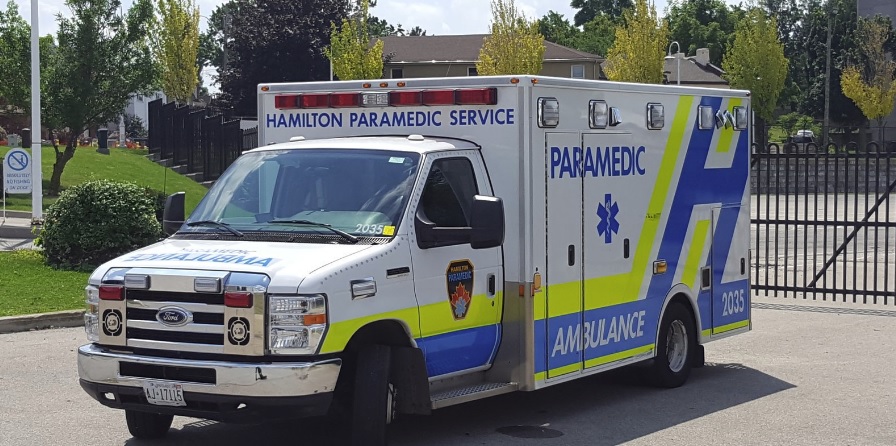The charity organization tapped with driving positive change in Hamilton revealed it’s 2019 study on Wednesday highlighting the impact of mental health and addiction on the city’s population.

The latest Vital Signs report from the Hamilton Community Foundation revealed a growing concern for mental health in youth and an opioid problem they say is at “crisis proportions.”
Mental Health
The foundation says over two-thirds of Hamiltonians reported “very good” or “excellent” mental health, but those numbers dropped as people entered the 35-plus age range.
The happiest group were those between 18 and 34, with 76 per cent reporting good or excellent mental health.
About 28 per cent of Hamiltonians aged between 35 and 49 labeled themselves as having quite a lot of “perceived life stress” while 31 per cent of people in the 50 to 64 age range said the same based on Stats-Can numbers presented in August.
Hospitalizations for most mental health disorders have been rising since 2011. The rate for people over 12 with mood disorders rose from 161 cases for every 100,000 people to 198 cases per 100,000 people, an increase of 23 per cent.
Students
Of concern are the growing numbers related to poor mental health in high school students over the past decade.
Regional data — which includes Hamilton, Niagara, Brant, Haldimand and the Waterloo-Wellington — showed 27 per cent of students in Grades 9 through 12 reported poor mental health which is slightly higher than the Ontario average of 21.5 per cent.
Millenials
The report also drew numbers from a McMaster study focusing on Hamilton millennials (born 1982 through 1997) which said that more than one in four rated their mental health as fair or poor. Millennials with precarious work were three times as likely to report fair to poor mental health.

Get weekly health news
Two-Spirit and LGBTIQ+
Mental health with members who identify as Two-Spirit and LGBTIQ+ varied. A joint survey with McMaster University, the AIDS Network and researchers who are Two-Spirit and LGBTIQ+ showed 44 per cent of respondents said their happiness level was good or great.
More than 50 per cent of people who identified as lesbian or gay were the most likely to respond with good or great while only 25 per cent of those who identify as transgender responded positively.
Children
There has been sharp increase in mood and/or anxiety disorders among children and youth in recent times. Hospitalization rates for children and youth with a mood disorder increased 134 per cent between 2015 and 2010 with close to 222 cases per 100,000 people in 2015 as compared to just 95 cases for every 100,000 in 2010.
Anxiety-related disorders in children and youth also increased substantially, with hospitalizations for 187 per 100,000 people while 2010 saw 20 cases per 100,000 people in 2010.
Self Harm
Females under 20 are more than three times as likely to visit an emergency room for self-harm than any other group. Recent numbers from the Canadian Journal of Psychiatry show a rate of 410 cases per 100,000 people a significant increase from 2014 numbers which showed the rate was 321 cases for every 100,000.
Self-harm overall increased to 150 cases per 100,000 people compared to 118 per 100,000 in 2010.
Addiction
The most noticeable addiction-related problem standing out in the Vital Signs report was opioid-related deaths in Hamilton.
The study referred to the numbers from the city’s Opioid Information System as at “crisis proportions.”
Opioids
Deaths caused by opioid use spiked in 2018 with 103 deaths in the city (with 19 still pending due to investigation) dwarfing comparable numbers from a 2012 report which counted 37 deaths.
Hamilton’s rate of opioid deaths in 2017 was about 70 per cent higher than the provincial average with 15.4 per 100,000 population compared to the provincial average of 9 per 100,000.
Emergency-room visits for opioid overdoses in Hamilton for 2017 was almost twice the amount for cocaine, methamphetamine, alcohol and cannabis combined.
Alcohol
Alcohol addiction was on par with provincial averages according to 2013-2014 City of Hamilton Community Alcohol numbers.
Forty-three per cent of Hamiltonians reported exceeding low-risk guidelines close to the provinces 44 per cent average.
Over 60 per cent of Hamilton youth said they exceeded guidelines, which was the highest percentage of any age group.
Smoking
Meanwhile, positive trends when it comes to smoking in the city.
According to the 2015-2016 Canadian Community Health Survey, 13.6 per cent of Hamiltonians reported smoking tobacco daily, similar to the 11.9 per cent provincial average.
The numbers down quite a bit from a decade ago when 18.5 per cent of Hamiltonians reported smoking
daily.
Smoking among youth appears to be decreasing as abstinence (those who never start smoking) increased to 88 per cent in 2013-2014 compared to 72 per cent in 2003.
However, the survey notes that vaping rates among youth are on the rise.

The Vital Signs report is in it’s ninth year of existence with the first study released in 2010.
The project is under the guidance of a panel of community experts providing an insight into Hamilton’s vitality as well as identifying significant trends and issues.
The Hamilton Community Foundation (HCF) is part of a network of over 191 Canadian community entities who contribute time, leadership and financial support to the studies according to President and CEO Terry Cooke.
“This is not original data. It’s from a range of different sources. But what we do is vet it and synthesize it with subject experts, ” Cooke told Global News.
“Our role is to identify the challenging issues to Hamilton’s trajectory across the board and to use the 200 million dollar endowment that we have been lucky enough to have received since 1954 to try and make a difference.”








Comments